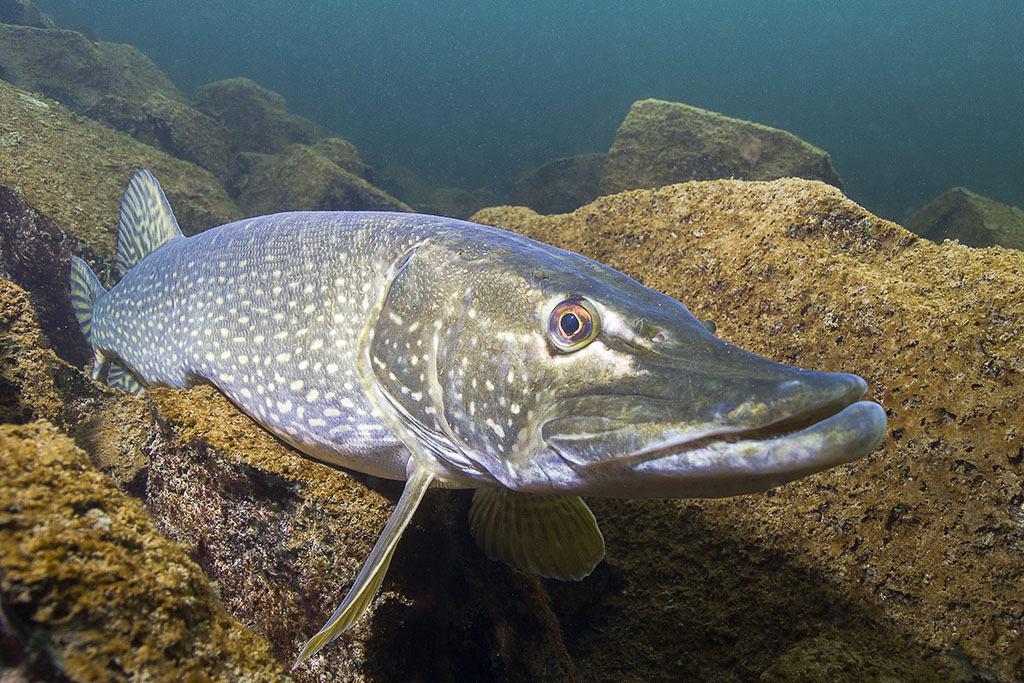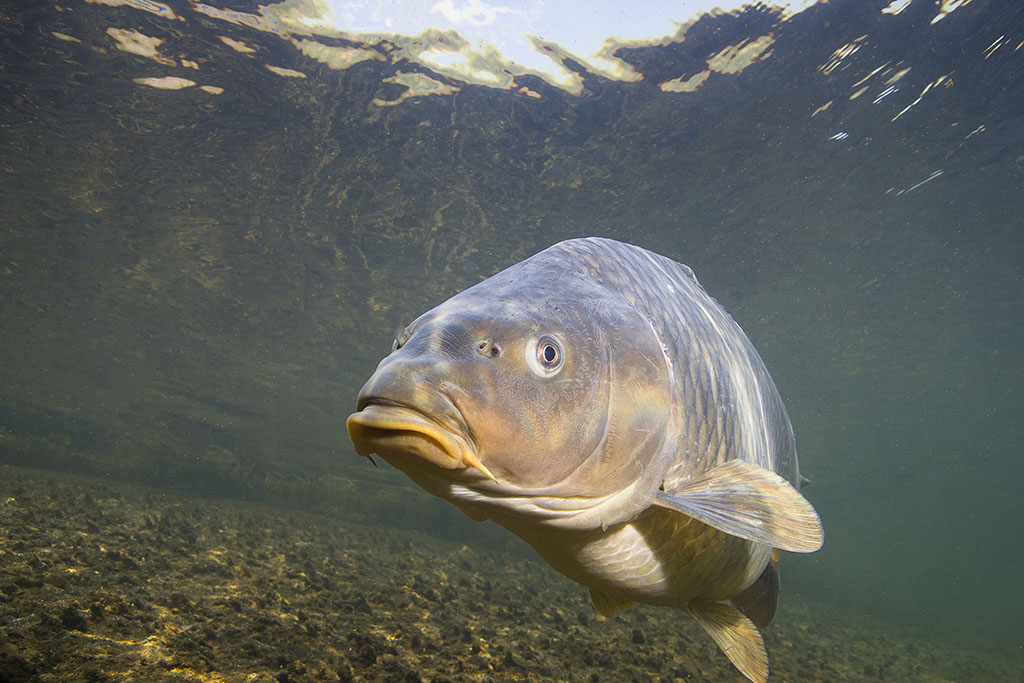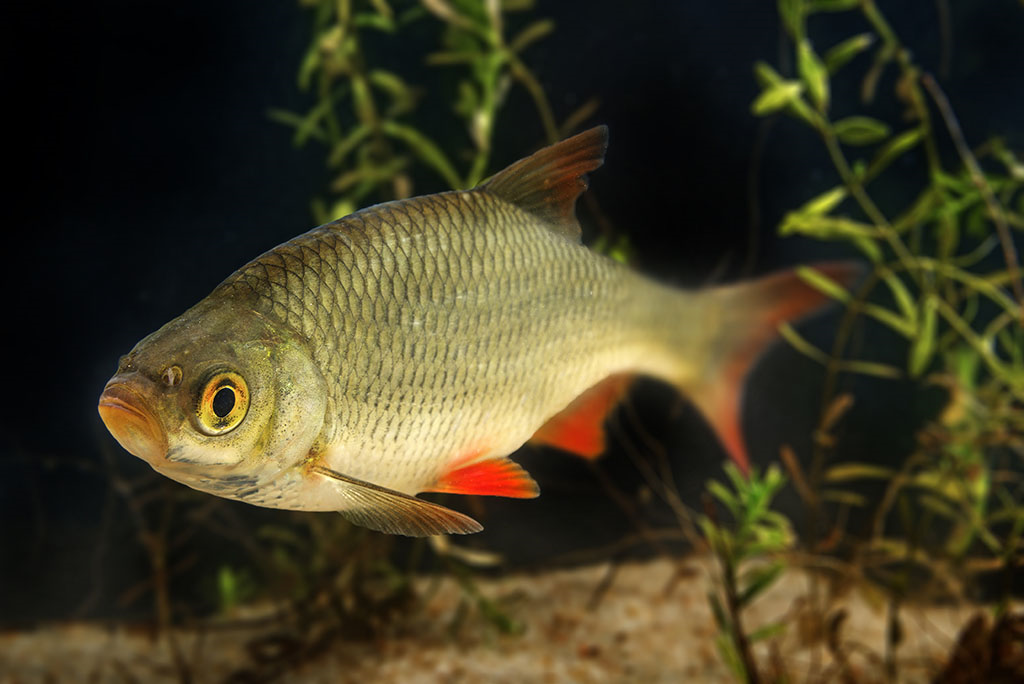Common Freshwater Fish In The UK To Get You Hooked On Angling

Here in the UK, we’re lucky enough to be spoilt for choice when it comes to freshwater fishing; we’re never far away from a canal, river or lake, all of which have a wide variety of fish. There are over 42 species of freshwater fish in UK waters, from the tiny 20g stickleback to the 400kg Atlantic sturgeon, and it’s always good to know what you’ve caught, so you know what you’re bragging about!
With this in mind, we’ve put together a quick guide to the most common fish in the UK.
Pike
Pike are commonly found in lakes and slow-moving rivers and canals. They like lots of plants and vegetation to hide behind so they can catch fish, frogs, small mammals or ducklings. Their backward-pointing, razor-sharp teeth make them fierce predators and they’re capable of eating something up to half their body weight.
Pike are very strong so need a strong tackle; the best method is to use a spinner, plug or lure. The largest pike caught in the UK weighed in at 42lbs in Northamptonshire in 2010.
The poor pike is the subject of many a myth, with tales of monster pikes lurking at the bottom of ponds and gravel pits. The truth is that no pike has ever dragged an unsuspecting dog or child into the watery depths of a canal or pond, and despite their fierce appearance, they are quite fragile fish that needs careful handling when returning them back to the water.
Rainbow Trout
This silvery-brown fish has dark spots with a purple/pink stripe down its flank. They were introduced to UK waters from North America in the 20th century and, despite their attractive appearance, they are a very aggressive predator, feeding on anything they can get their fins on; including larvae, small fish, mayflies and damselflies.
They can often be caught in reservoirs using maggots and worms as bait, although lots of anglers prefer the challenge of fly fishing. The largest rainbow Trout caught in the UK was just under 35 lbs, in 2016.
Rainbow trout are well-known for always returning to the area they were born when laying their eggs.

Common Carp
The common carp was introduced to the UK in the 13th or 14th centuries and is commonly found in weedy ponds, canals, and lakes. They’re omnivorous; eating plants, algae, invertebrates, and other fish, in particular freshwater mussels, which they eat with the shells on.
Carp like to hang around in reed beds, or near vegetation, although they do occasionally like to catch some rays on a warm sunny day, basking near the surface, which means they can be caught there using baits such as bread, or even dog biscuits. Carp are notoriously greedy and one of their favourite baits is sweetcorn; check out our homemade fishing bait recipes for more ideas.
Carp are mentioned in the first known English language book about fly fishing, written in 1496 by Dame Juliana Berners, where they were described as ‘bad fish to catch’. Carp are also traditionally eaten for Christmas dinner in some parts of Europe.
Common Bream
A member of the carp family, the bream is a medium-sized fish that lives in large ponds, lakes, and canals. They’re bottom feeders who eat snails, small mussels, and worms. They congregate in large shoals which means you can catch a few of them in one session, and they prefer deeper water – the muddier the better.
The best time to catch them is early morning or late evening, particularly if you’re fishing in a canal and there’s a lot of boat traffic around during the day.
Bream can grow up to 90cms, and the biggest one ever caught in the UK was in 2012 in Cambridgeshire, weighing in at just over 22lbs, but you might be interested to know that bream are also a sub-family of the minnows; tiny fish that are at most 5 cm long. That’s a family reunion we’d love to see!

Roach
Another member of the carp family, roach are one of the most common fish in UK waters, preferring to congregate in large shoals in shaded areas of ponds, lakes, and slow-moving rivers. They lay their eggs in shallow water with lot a of vegetation around; they can lay up to 100,000 eggs per spawn and stick them to plants and rocks.
Roach like hanging around near bridges and reed beds, often where there’s a drop-off in depth too, and you can’t go wrong with a bit of bread for bait; that’s not to say they won’t also like wet flies. The biggest one caught in the UK was 4lb 5oz in Cambridgeshire in 2006.
The roach is a favourite food of the grey heron, and while here in the UK we tend to find it inedible, roach are thought of as a delicacy in other parts of the world.
This guide is only a small drop in the pond when it comes to the huge variety of fish we’ve got swimming around in some of the amazing fishing destinations here in the UK. If this has inspired you to plan your next angling adventure, you might want to consider fishing insurance; choose from 3 different policy types and then tweak it with a range of optional benefits, such as fishing technology cover, and family member cover, so that you can head out to the river bank knowing we’re right behind you.
All content provided on this blog is for informational purposes only. We make no representations as to the accuracy or completeness of any information on this site or found by following any link on this site. We will not be liable for any errors or omissions in this information nor for the availability of this information. We will not be liable for any loss, injury, or damage arising from the display or use of this information. This policy is subject to change at any time.
We offer a variety of cover levels, so please check the policy cover suits your needs before purchasing. For your protection, please ensure you read the Insurance Product Information Document (IPID) and policy wording, for information on policy exclusions and limitations.







